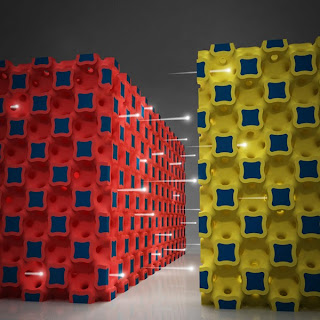The article - from the University of Illinois's news bureau - summarizes research published in the April 16, 2013 issue of the journal Nature Communications under the far more technical title "[h]igh-power lithium ion microbatteries from interdigitated three-dimensional bicontinuous nanoporous electrodes".
To summarize (enough to whet your whistle)...
With currently available power sources, users have had to choose between power and energy. For applications that need a lot of power, like broadcasting a radio signal over a long distance, capacitors can release energy very quickly but can only store a small amount. For applications that need a lot of energy, like playing a radio for a long time, fuel cells and batteries can hold a lot of energy but release it or recharge slowly.Maybe supercapicitors aren't the answer after all...
The new microbatteries offer both power and energy, and by tweaking the structure a bit, the researchers can tune them over a wide range on the power-versus-energy scale.
The batteries owe their high performance to their internal three-dimensional microstructure. Batteries have two key components: the anode (minus side) and cathode (plus side). Building on a novel fast-charging cathode design by materials science and engineering professor Paul Braun’s group, King and Pikul developed a matching anode and then developed a new way to integrate the two components at the microscale to make a complete battery with superior performance.

No comments:
Post a Comment